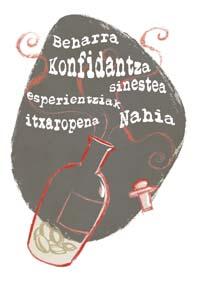Treatment of the head
2010/09/01 Lakar Iraizoz, Oihane - Elhuyar Zientzia Iturria: Elhuyar aldizkaria
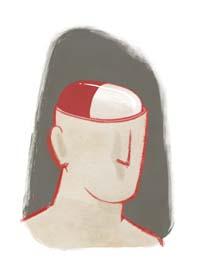
The placebo effect is a chain of reactions in the brain and hope for a clinical improvement, the initial gunshot. In fact, this hope activates the region that processes the prize in the brain, even if the treatment is placebo.
In general, "anything that gives us a sense of pleasure in life intensifies the activity of this region," says Ra l de la Fuente, neurologist at the British University of Columbia (Canada). It refers to the striated ventral body. Some researchers provide more details and point out as a starting point one of the structures that form the corrugated ventral body, the nucleus accumbens.
In this activation a certain neurotransmitter is released: dopamine. Dopamine participates in behavioral aspects such as motivation, sleep, humor, attention and, of course, the prize.
This dopamine released into the neural network, reaching other regions of the brain, unites them. It depends on the disease or symptom that has led the patient to placebo treatment, and what other regions are activated and in which neurotransmitter or hormone is released.
In fact, pain and depression are not processed in the same region of the brain, and problems associated with Parkinson's are usually observed in the region that coordinates movement. In addition, different neurotransmitters participate in each of these regions.
Pain relievers
Pain has been the most studied field in the study of the placebo effect and the first studies to know the neurobiological basis of the placebo effect in this field.
In 1978, the University of California research team, Jon Levine, suggested what compounds might be behind the analgesia caused by placebos. Endorphins, composed of the morphine group that produces the body itself, were mentioned. This is due to the incorporation of naloxone in patients with postoperative pain. Naloxone is an opioid antidote. When vaccinated, they saw that the analgesia caused by the placebo had disappeared and that the pain before giving the placebo had returned.
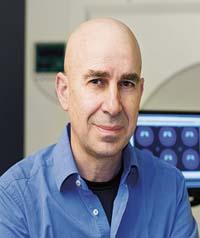
Morphine and other opioids make it difficult to spread the pain signal between neurons. This removes the pain. In fact, the neurons that carry out the transmission of pain have receptors that bind to morphine and, once joined, the transmission is interrupted.
As naloxone is associated with greater affinity to morphine receptors. But, unlike morphine, it does not interrupt the transmission of pain and therefore does not eliminate pain.
Confirming the imagination
These indirect tests of Levine have been confirmed after the development of neurovisual techniques. In addition to the presumption of taking the drug causes the release of endorphins, the brain region in which it occurs has been identified.
In one experiment, neuroscientist Jon-Kar Zubieta and his teammates caused discomfort to participants by introducing a high-concentration saline solution at Michigan University. A decrease in the activity of several regions that process pain after the application of placebo was observed, using positron emission tomography (PET) scans.
"As has been seen, the activity of the endorphin system has increased when participants have been informed that they have been given a medication that eliminates pain. Participants in the experiment also noted that they felt less pain. The connection between brain and body is quite clear." This statement was made by Zubieta in line with the published research.
Moreover, even before introducing the supposed analgesic participants observed that they began releasing endorphins. They anticipated the medical benefit.
Dopamine plus dopamine
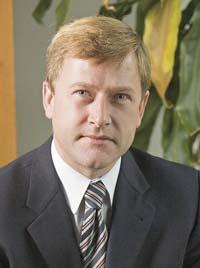
The secretion of endorphins is not the only mechanism that is launched by placebo effect. In other regions of the brain it also causes a greater release of dopamine in some diseases. For example, in the case of parkinson's.
De la Fuente's team, in an article published in the journal Science in 2001, explained that placebos cause the release of dopamine in people affected by parkinson's, which allows them to improve. Neuroimaging techniques were used to reach these conclusions.
"Now we know that once the striated body in the ventral is released, dopamine is released into the dorsal striated body," says De la Fuente. People with Parkinson's disease have a lack of dopamine in the dorsal striated body. Therefore, they inevitably improve because they have met their shortages.
In the case of depression, which is also very sensitive to placebos, experts believe that, instead of dopamine and endorphins, serotonin is sometimes released. In some ways, it can be said that there is a shortage of serotonin in depressive patients in certain areas of the brain. That's why placebos can improve.
However, the Source wanted to emphasize that there is not as much serotonin light as in the other two cases. "We do not know," he adds, "whether all the placebo responses observed are related to the three substances mentioned. We know that dopamine and endorphins are involved, and probably also serotonin. In addition, more substances may be involved in the placebo effect. If I had to bet, I would. But it has not yet been investigated."
How long to relieve symptoms?
The endorphins released by placebos remove the pain, complete the lack of patients affected by dopamine, which probably relieves depression. In these three cases the symptoms are relieved. That does not mean that diseases are cured.
For parkinson's, for example, neurons that secrete dopamine die. In the ventral striated body, an essential area to control movement, it is observed that the level of dopamine decreases. The acquisition of placebo involves a greater activity of the living. But dead neurons are not resurrected.
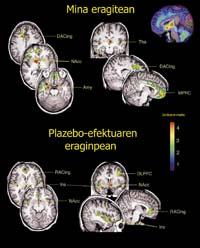
The same happens when depression and pain are symptoms of a disease: they do not cure diseases, they decrease the symptoms caused by it.
It should be thought, however, that if it is a relief from suggestion and hope of healing, sooner or later it will disappear, then reappearing the previous symptoms.
There, again, is the hope generated by the treatment. Therefore, the more aggressive the treatment, the longer the placebo response lasts. "When you accept an operation, you expect the improvement to last a long time and when you take a pill you know that in a few hours the effect will pass," said Fuentes.
Simulating an introduction operation of new neurons to treat Parkinson's, for example, Denver University saw that the large activity of neurons by placebo effect lasted more than a year.
Immunity under placebo effect
Along with the study of brain activity and neurotransmitters, it has sometimes been studied whether the immune system reacts because of placebos. For example, a group of researchers from the University of Duisburg-Essen (Germany) and the Swiss Federal Institute of Technology investigated this link in rats. The answer was yes (see left box). In this case, they influenced the conditioning --finally, supplying only fresh water - of the depressed immune system of rats.
In addition to influencing conditioning, other conditions and circumstances have shown that the immune system is included in the placebo response. Numerous studies with postoperative patients have shown that in addition to eliminating pain, inflammation in the treated area decreases when taking placebo. Inflammations come back with the antidote of endorphins.
Inflammation is one of the first reactions of the immune system when a wound or damage occurs. The goal is to protect the affected area. But this protection involves a series of symptoms that make us feel sick: increase, pain, fever, etc. It is an acute phase response.
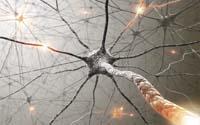
Well, if placebos partially eliminate these symptoms, the placebo effect may generally decrease the response in the acute phase of the immune system. This is proposed by Professor Dylan Evans of the Cork University School in his book Placebo.
According to De la Fuente, "despite its appeal, the author's personal interpretation" is the proposal by Evans. In fact, it is "very possible" that the release of these substances and the immune system's response is somehow related, but this relationship is "not verified."
Great momentum thanks to visibility
All experts consider incipient knowledge about the placebo effect in general. It is true that it was first observed in the 1950s. In the late 1970s it was first proposed what substance could be behind the placebo response. But until quite some time ago, until 2001, the influence of placebos on the brain was not closely observed. Compared to the development of people, "the baby who does not yet know how to walk" is, according to the neurologist of the Source, our knowledge of the placebo effect.
However, since the development of neuroimaging techniques, research has proliferated and prospered. All the discoveries that have been made in recent years about the type of placebo, the mechanisms behind it and its possible medical applications have given "credibility" to the phenomenon that has hitherto been orphaned. Maj-Britt Niem, a researcher at the Swiss Federal Institute of Technology, and one of the authors of the aforementioned experiments on the immune system, says so in the journal Scientific American.
As for medical applications, he says that "some doctors begin to recognize" using the placebo effect to increase the incidence of drugs and surgeries. De la Fuente is of the same opinion. "It is not an apology - he explains - in favor of the use of placebos. It is about making the most of the placebo effect associated with treatment. Any active treatment has associated a placebo effect generated by the hope of healing." He believes it would be a way to help patients. However, this path raises ethical doubts.

Gai honi buruzko eduki gehiago
Elhuyarrek garatutako teknologia



